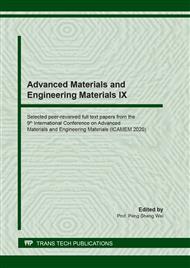p.65
p.71
p.77
p.83
p.89
p.95
p.101
p.107
p.113
Study on Fatigue Behaviors of 0Cr21Mn17Mo2N0.83 High Nitrogen Stainless Steels
Abstract:
High cycle fatigue behaviors of 0Cr21Mn17Mo2N0.83 high nitrogen stainless steels at forged and solid solution state were investigated. High cycle fatigue tests were carried out up to 107cycles at a stress ratio R=0.1 and frequency of 70Hz on specimens using a high frequency fatigue machine. Fatigue fracture surfaces of specimens that in the high cycle fatigue tests were observed using a scanning electron microscope for revealing the micro-mechanisms of fatigue crack initiation and propagation. The results showed that the fatigue limit of test alloys at room temperature is 865.25 MPa (as-forged alloy) and 736.10MPa (solid solution alloy), respectively. The micro-fatigue fracture surface of the test alloys included three representative regions. These regions are fatigue initiation area, fatigue crack propagation area and fatigue fracture area. Fatigue cracks of the test alloys initiate principally at the precipitates, inclusion or uneven stress concentration sites of alloy surface, and propagate along the grain boundary. The fatigue striations of fatigue crack propagation area are very clear. The fatigue fracture of test specimens show the rupture characteristics of quasi cleavage and dimple fracture. The room temperature fatigue properties of as-forged alloy are generally higher than that of the solid solution high nitrogen stainless steel according to the S-N curves fitting results.
Info:
Periodical:
Pages:
89-94
Citation:
Online since:
September 2020
Authors:
Price:
Сopyright:
© 2020 Trans Tech Publications Ltd. All Rights Reserved
Share:
Citation:


